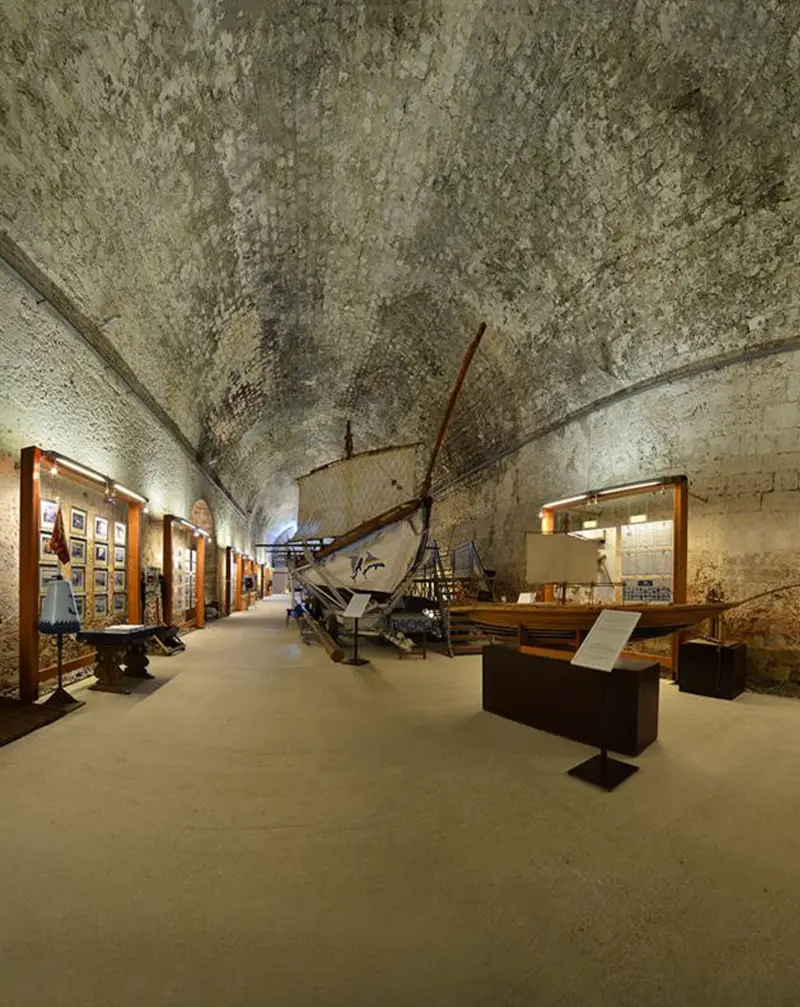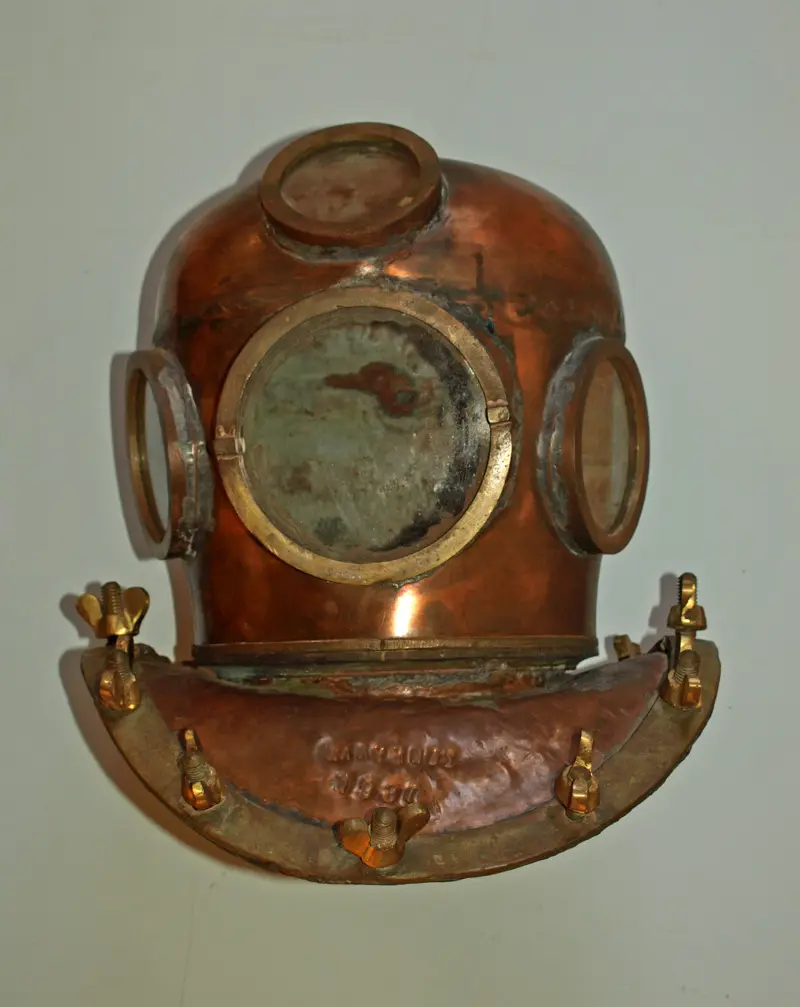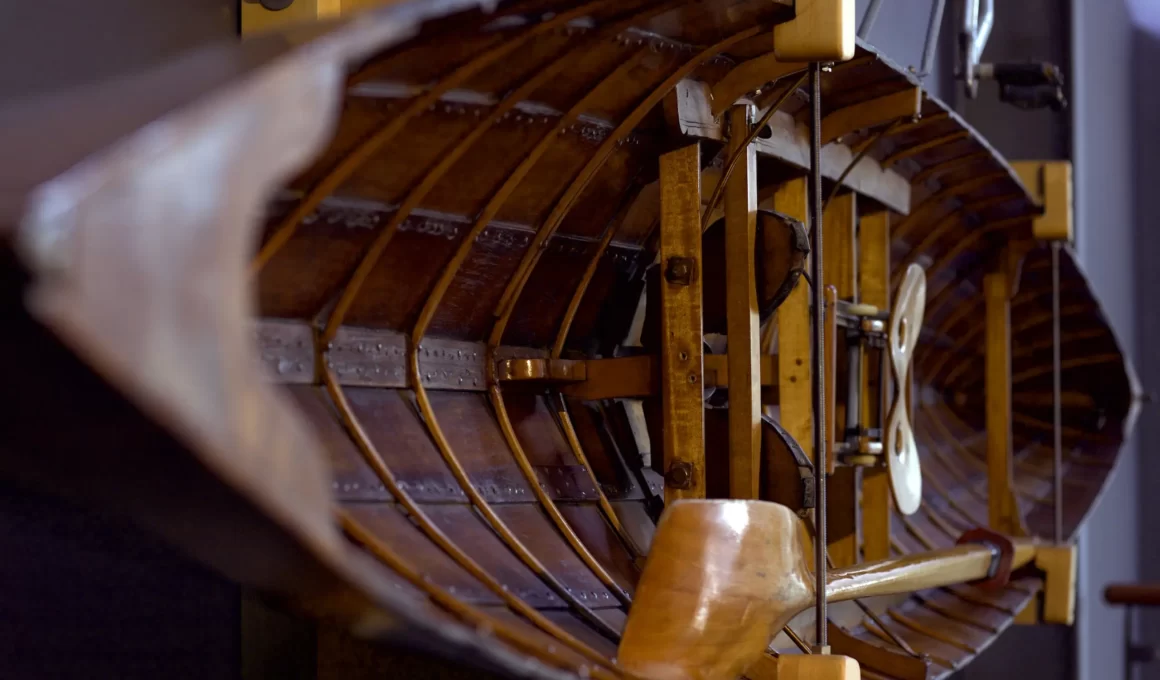On the northwest side of the harbour in the city of Chania, the Venetians built the Revellino del Porto, a fortification project to protect the harbour and its entrance. Today, the main building of the fortress houses the main number of exhibitions of the Maritime Museum of Crete. On the two floors of the museum, you will explore the maritime history of Crete and Greece.
Table of Contents
Chania Maritime Museum: An Iconic Architectural Building
History
The “FIRKA” Fortress is situated at the entrance of Hania Old Harbour and it was constructed by the Venetians (1204-1669) in order to be used as the local garrison.
Later Ottomans (1669- 1898) used it for the same purpose and established there the Division Command. The name “FIRKA”, which in Ottoman Turkish language means barrack, is used until today. On the 1st of December in 1913, it was raised here for the first time the Greek flag, a memorable event connected with the Unification of Crete with the motherland Greece.
Nowadays, at the entrance of this Fortress, it is situated the Maritime Museum of Crete, which was founded in order to house and perceive the Greek Maritime Traditions and those of Crete as well.
It was donated by the Navy and operates with the uncompromising support of the Region of Crete – Regional Unit of Chania, the Municipality of Chania and the Naval Base of Crete.
Foundation
The Maritime Museum of Crete was founded in 1973, on the 32nd anniversary of the Battle of Crete. The Founder was Vice Admiral Ar. Giannopoulos H.N.
The local press pointed out during the opening day of the museum: “The Maritime Museum is a great proof of the interest and love for our glorious Greek Navy, which continuing its wonderful traditions in war and peace, bequeaths to this provincial city of Greece a cultural space congruent with the best ones of that type in Europe”.
The Maritime Museum of Crete is the second oldest Maritime Museum in Greece, after the Maritime Museum of Greece in Piraeus and it welcomes approximately 45,000 visitors every year.


If oceans, ships and sea vessels excite you, you have to visit the Maritime Museum of Chania. Located in the old Venetian Firka Fortress near the harbor of Chania, this museum perfectly illustrates the naval tradition and history of Cretans from the Minoan era to WW2. Here, you will explore the maritime history of the entire island of Crete.
Chania Maritime Museum’s Permanent Exhibition
The museum covers everything from prehistoric times and the Minoan era to the Greek revolution and modern times. Next to the main collections, the museum is also home to a shell exhibition that shows the unique beauty and diversity of the sea life in Crete.
There is even a fully-equipped library on site. Finally, apart from all the exhibits, this building signifies the unification of Crete with Greece because it is here that Cretans first raised the Greek flag after unification in 1913.
All in all, your visit to the Maritime Museum of Crete will take you on a journey through history. This time, however, the voyage will be by sea rather than land.
Exhibitions and Thematic Events
Marine Environment
In the depths of the seas and the Greek seabed, there is an unknown wonderful world, an enchanting natural beauty that the few who can visit it describe as entering a silent paradise with infinite strange forms and colors, with mythical animals which look like plants and plants that resemble animals.
The game of life played at sea is about all the living organisms of the earth. Everyone is born, eats and gets eaten, playing, growing, fighting, multiplying, and preserving without knowing the marvelous balance of life that was created millions of years ago in the humid kingdom of Poseidon. This ecological balance is the absolute prerequisite for preserving all living creatures on earth and their purely natural environment.
The seabed is the greatest source of wealth we have. It is our life itself and we all, citizens and the state must do everything we can to maintain the balance of our living world. That would be what the few inhabitants of the seabed who are presented to the visitor would tell us.
Battle of Crete
The Battle of Crete is one of the most significant chapters of the Second World War, as it is the last phase of the german-greek war. In 1941, Crete added its own page to the constant struggle of the free world against the forces of Nazism. British, Australian, New Zealanders, and Greek soldiers, along with the proud Cretan civilians, fought for freedom and human dignity.
The occupation of Crete was considered an unrealistic military objective, no significant defense preparations had been made on the island and Hitler himself could not see the expediency of the operation and therefore hesitated to undertake an air attack on Crete, the only viable way to achieve its occupation.
Maori Battalion
The 28th battalion of New Zealand, or the Maori Battalion, as it is widely known, was founded in October 1939. Initially, it consisted of volunteer Maori soldiers with Pakeha (white) officers, a total of about 1,000 men. After the basic training in New Zealand camps, the Battalion traveled to England in the middle of 1940. It was transferred to the Middle East in January 1941, where it was supplemented by another 300 men. In March 1941, it again moved to the front, in Greece, where it faced the enemy for the first time in the Petra Passage.
The brutal retreat came to Crete where six other New Zealand battalions, with forces from England, Australia and Greece and the heroic people of Crete, participated in the historic Battle of Crete. Initially, the Maori Battalion held positions in Platanias where they faced the German air invasion on May 20, 1941. After two days they participated in the counterattack at the strategic airport of Maleme and the following fierce fighting in the area of Galatas.
On May 27, when they retreated with the other allied forces, and after they danced the “hakka” (Maori War Dance), they carried out the well-known counterattack, with bayonets, the effect of which was to kill enough Germans to force them to temporarily retreat. After the successful evacuation of Crete to Egypt, the Battalion returned to active action later in 1941 in the North African campaign and participated in many battles in Sollum, Manastir, Sidi Magreb, Gazala, Mingar Qaim, El Alamein, Medenine and Tebaga Gap.
The reputation of the Maori Battalion as decisive warriors is also reflected in the very high level of men’s losses. Out of the 3,600 soldiers who fought the Battle of the Second World War, 649 were killed and 1,712 injured. It is worth mentioning the words of General Freiburg, New Zealand’s Chief of Forces, that no other battalion under his command “participated in more battles, or, unfortunately, had so many heavy losses as the Maori Battalion”.
The most remarkable piece of Greek defense was the unarmed people, who stubbornly resisted and invaded each other. From May 28th to June 1st, the Allied forces were evacuated to Egypt, culminating in the fierceness of air strikes against British ships, whose crews showed bravery and self-sacrifice.
USEFUL INFORMATION
Before your visit see the following information:
Dates and opening hours:
Operating Hours
| Dates | Everyday | Sunday |
|---|---|---|
| 01/05 – 31/10 | 09:00 – 16:00 | Closed |
| 01/11 – 30/04 | 09:00 – 15:40 | Closed |
The Museum is closed on Public Holidays
Tickets
Regular: 4,00 €
Children, Student: 3,00 €
Museums are closed on the following holidays:
1 January, 25 March, Greek Orthodox Easter Sunday, 1 May, 25 & 26 December
Museums are open on the following holidays:
6 January, Clean Monday, Greek Orthodox Easter Monday, Holy Spirit Monday, 15 August, 28 October.
On Good Friday and Saturday, the opening hours diversify. For further information and confirmation please call or visit the museum’s website (http://mar-mus-crete.gr/en/the-museum/).
Admission fee:
Valid tickets (full and reduced) are needed for admission. In some cases, there is a special ticket package for museums and archaeological sites within the same area. From the 1st of November till 31st of March a reduced rate for single-use tickets is valid for all visitors.
Permanent Exhibition of Ancient and Traditional Shipbuilding
Operating Hours
| Dates | Everyday | Sunday |
|---|---|---|
| 01/06 – 31/10 | 09:20 – 16:00 | Closed |
| 01/11 – 30/04 | Closed |
The Exhibition is closed on Public Holidays
Tickets
Regular: 3,00 €
Children, Student: 2,00 €
Minoan Lines Bonus Club members: 10% discount on the shop. The offer is valid only for members with card.
Minoan Lines Bonus Club Members: Reduced ticket of 2.5€ (regular price 3 euros) and 10% discount on the shop. The offer is valid only for members with card.
Free Admission
Members of ICOM / ICMM
People with disabilities
Children up to 6 years old
Guides
Journalists
For information about free and reduced admission to Greek State Museums please press here: https://www.culture.gov.gr/en/service/SitePages/view.aspx?iID=2695






